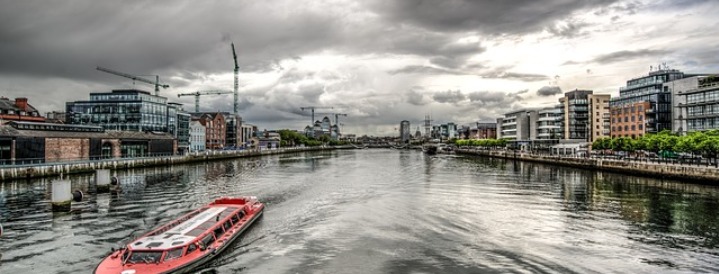Top Family Activities In Dublin
Dublin has to be one of the most family-friendly cities in Europe. Not only is it a relatively safe city, it’s small enough to avoid long journeys between attractions, which as any parent will tell you, can be just as stressful for adults as it is for children. Here are five of the best family days out in Dublin.
Dublin is one of Europe’s great cities; a vibrant, buzzing hub for music, theatre, nightlife and culture. While it’s gained a recent reputation as a destination for stag and hen parties, Dublin itself is also a wonderfully family friendly place to visit. Dublin is one of Europe’s great cities; a vibrant, buzzing hub for music, theatre, nightlife and culture. While it’s gained a recent reputation as a destination for stag and hen parties, Dublin itself is also a wonderfully family friendly place to visit.
We recently visited Dublin for three days thinking this would give us ample time to explore the capital. Wow were we wrong! There are so many things to do in Dublin that the trip left us wanting more.
The reason we chose to go to Dublin in the first place was really just convenience. From Manchester airport, the flight is very short at around 30 minutes. This means no jet-lag eating into precious away time. Our aim, whilst we are still working in more traditional 9-5 roles, is to see as much of the world as possible – starting with all the major European cities. Last year we went to Paris (loved it by the way!) and next year we are looking at London.
The Viking Splash Tour
If you’ve been to Dublin before, then you’ve probably been accosted by shouts from would-be Vikings travelling chaotically around the city in an amphibious vehicle. If so, you’ve just witnessed the infamous Viking Splash tour.
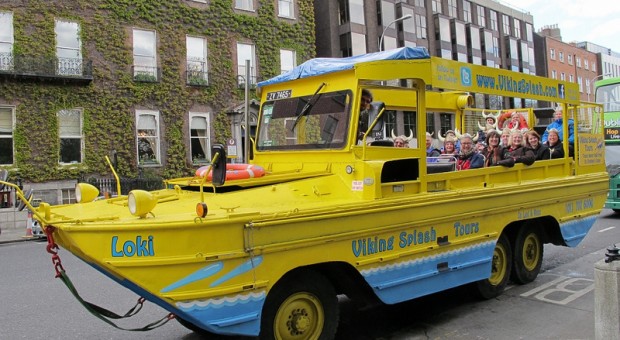
The tour is a unique and fun way to explore the city by land and water in a revamped World War Two landing craft. A family ticket for two adults and three children costs just €60 for a tour lasting over 90 minutes and takes in all the best sites of Dublin before going for a dip in the Grand Canal Basin. Don’t worry, the Viking headgear isn’t compulsory, but it is fun!
The National Aquatic Centre
You’ve probably heard that it rains a lot here in Ireland. But that doesn’t mean you can’t still have fun. In fact, one of the best things to do if it rains is to get wet! Head out to the National Aquatic Centre in Blanchardstown to visit one of Europe’s biggest indoor waterparks and experience some of the best water slides and rides you’ve ever experienced. It’s easy to forget about the weather outside when you’re splashing around inside, and young kids will go crazy for the Pirate Ship! Getting there can be tricky if you don’t have a car, so make sure you don’t forget to hire yours from Nova Car Hire at Dublin Airport.
Dublinia
The city’s Viking exhibition, Dublinia, has been growing in popularity over the years and is now one of Dublin’s biggest family attractions. Situated in Christchurch on the original site of Viking Dublin, it’s both educational and fun with plenty of activities for all the family to participate in. Try on Viking clothing, venture down Viking streets and get a first hand experience of what it was like to live in Viking Dublin. Afterwards visit the History Hunters Exhibition to see the collection of medieval artefacts, before exploring the ancient and mystical depths of Christchurch cathedral.
Dublin Zoo
The number one slot in our rundown of top family activities in Dublin will come as no surprise to those who have been before. Dublin Zoo is still Ireland’s top tourist attraction with over one million visitors in 2011. Children simply love it. That’s not to say adults don’t enjoy it either. After all, at heart, aren’t we all kids?
There’s so much to do, you could easily spend an entire day at the zoo. Take a stroll through the African savannah with the rhino, ostriches and giraffes, visit the gorilla’s rainforest and join the sea lions at feeding time, before enjoying your own lunch while watching the playful antics of the meerkat family through the window of the restaurant.
Afterwards, why not take the kids over to the family zoo where they can get hands-on experience with some of the animals. There’s little doubt that Dublin Zoo has something for everyone and continues to get better year on year. Which is why on special events and sunny days, it pays to get there early – as the queue can be huge
Dublin Castle
My first thought when I looked at Dublin Castle was ‘Where is the castle?‘ But after finding out how the current structure came to be, I realized Dublin Castle is the most fascinating building I have ever been to.
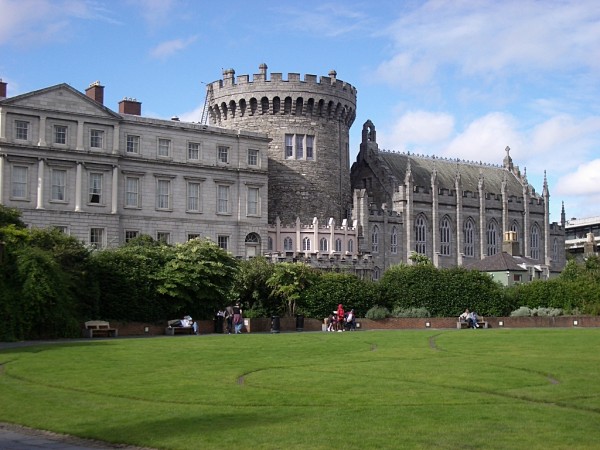
Dublin Castle has been continuously re-invented to meet the needs of its occupiers. The castle started life as long ago as the 930s, as a Danish Viking Fortress. During the 1170s, the castle was fortified by the Normans with wood and stone. Recognizing the importance of the site, in 1204 King John of England ordered a stronger castle to be erected for the defense of the city, to administer justice and to guard the royal treasure. These works were completed in 1230 and after this time the castle was the center of English colonial administration for centuries. Part of the castle, known as the Record Tower, was used as a prison and is now the last medieval tower standing in Dublin.
Sadly, much of the castle was destroyed after a fire in 1684, during which certain areas were blown up to prevent the fire spreading. The majority of the current building dates from the Georgian era. By the 19th century, the castle was used by government departments, the army, and the police, and also for lavish celebrations. During the first world war, the castle housed a red cross military hospital, which also took in casualties from the Easter Risings in 1916.
Today when you look at Dublin castle, you see what looks to me like a huge Georgian mansion in a horse-shoe shape overlooked by statues of fortitude and justice. Yet there are remnants of an older time – the Record Tower, the Chapel Royal and the Coach House in particular. The state apartments, within the Georgian parts of the building, are now used for presidential inaugurations and state functions.
What is there to do there?
I highly recommend the guided tour of the castle and grounds. You can visit Chester Beatty Library, the Coach House and wander around the grounds for free. However, the tour takes you into parts you don’t want to miss:
- The state apartments – where you can see, among other things, a throne room with a throne that was apparently made smaller for Queen Victoria but still looks like it would easily seat a giant.
- The undercroft – which is on the lower ground floor where you can see what remains of the River Poddle, the butt of the Gunpowder Tower (originally 5 stories high) and part of the 10th-century Viking town defense bank.
- The chapel royal – a beautiful gothic revival building.
For me, the knowledgeable and friendly tour guides brought the castle and its extensive history to life. Had we not gone on the tour I would not have realized the importance of the building. I loved going underneath the castle – seeing the ruins and the River Poddle. What really sticks in mind from the visit though is standing in the room in which James Connolly (one of the leaders of the Easter Rising rebellion) said goodbye to his family before being executed. There is so much history in Dublin Castle I’m surprised it is not bursting at the seams!
Trinity College
Trinity College is Ireland’s first university. Formerly a priory, Trinity College was founded in 1592. The university now has around 17,000 students and is spread across 47 acres. Right in the center of Dublin city – although you wouldn’t know that on campus. There was a fairly serene atmosphere within the grounds.
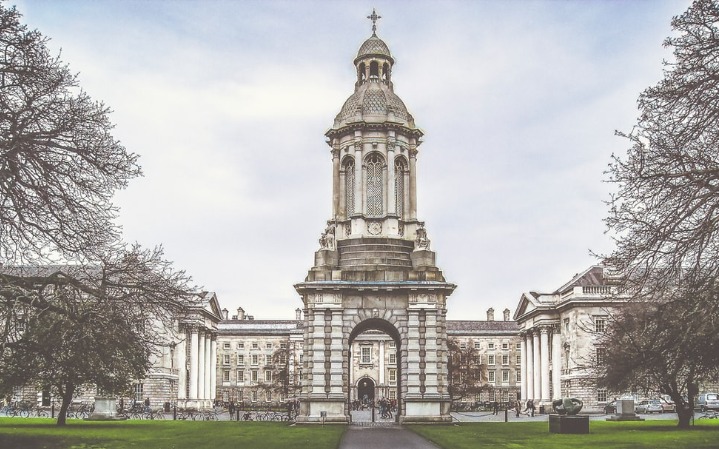
What is there to do there?
Trinity College houses the largest library in Ireland. The library has been part of the university since 1592 and has built up around 6 million printed volumes over the last 423 years.
One of the Library’s most famous manuscripts is the Book of Kells – a text containing the four gospels written on calfskin dating back to the year 800, it is estimated. Other than its historical and religious importance, the book is known for its lavish decoration.here.
The main chamber of the Library is called The Long Room, which is filled with around 200,000 of the library’s oldest books. The Long Room is staggeringly beautiful and cannot really be appreciated through a photograph. The ceiling is 65 meters high and there are books pretty much from floor to ceiling.
You might be able to tell but exploring the Long Room in the Old Library was my favorite thing to do at Trinity College. Have you ever been into a room and felt the history of it before? Well, that is how I felt in the Long Room. Whilst we were there, there was an exhibition in the Long Room about myths in children’s literature. Trinity College Library has 150,000 children’s books in Trinity College Library and it was fascinating to read about the changing approaches to children’s literature over the years and the current research which is ongoing.
Getting There & Getting Around
Getting to Dublin is easy – there are cheap flights from across Europe, while there are regularly daily ferries from the UK arriving in Dublin Port and the major ferry terminal at Dun Laoghaire, six miles south of the city.
Accommodation is plentiful but families basing themselves in the city center might find the ideal stay is to find Dublin vacation rentals – serviced self-catering apartments and holiday houses where you can have a home from home with plenty of privacy and none of the restrictions that come from staying in a hotel.
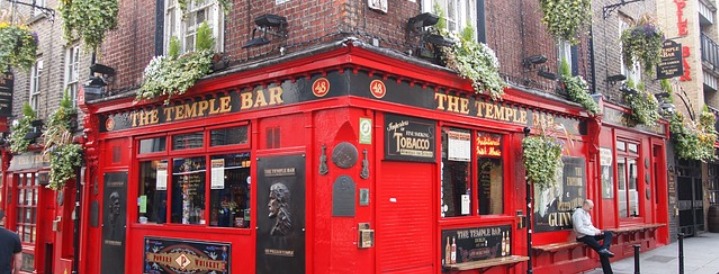
We didn’t have much chance to take in the sights on the drive from the airport to our guesthouse – it was a dark, fast and sleepy journey. Once we reached Temple Bar it was another story altogether. The area was teeming with people just like it was the middle of the day. There was a band playing U2 in the street (this is not a joke!) and a general hubbub of merriment coming from the pubs and restaurants. The atmosphere was electric and instantly I felt revitalized and excited – despite the long day we’d had.
History in the Making
Dublin city center is remarkably compact and the best way to get around is most definitely on foot. Why not take the hop on-hop off bus tour (kids go free) where you can get a feel for Dublin and simply jump off the bus at the spots you’re most interested in seeing?
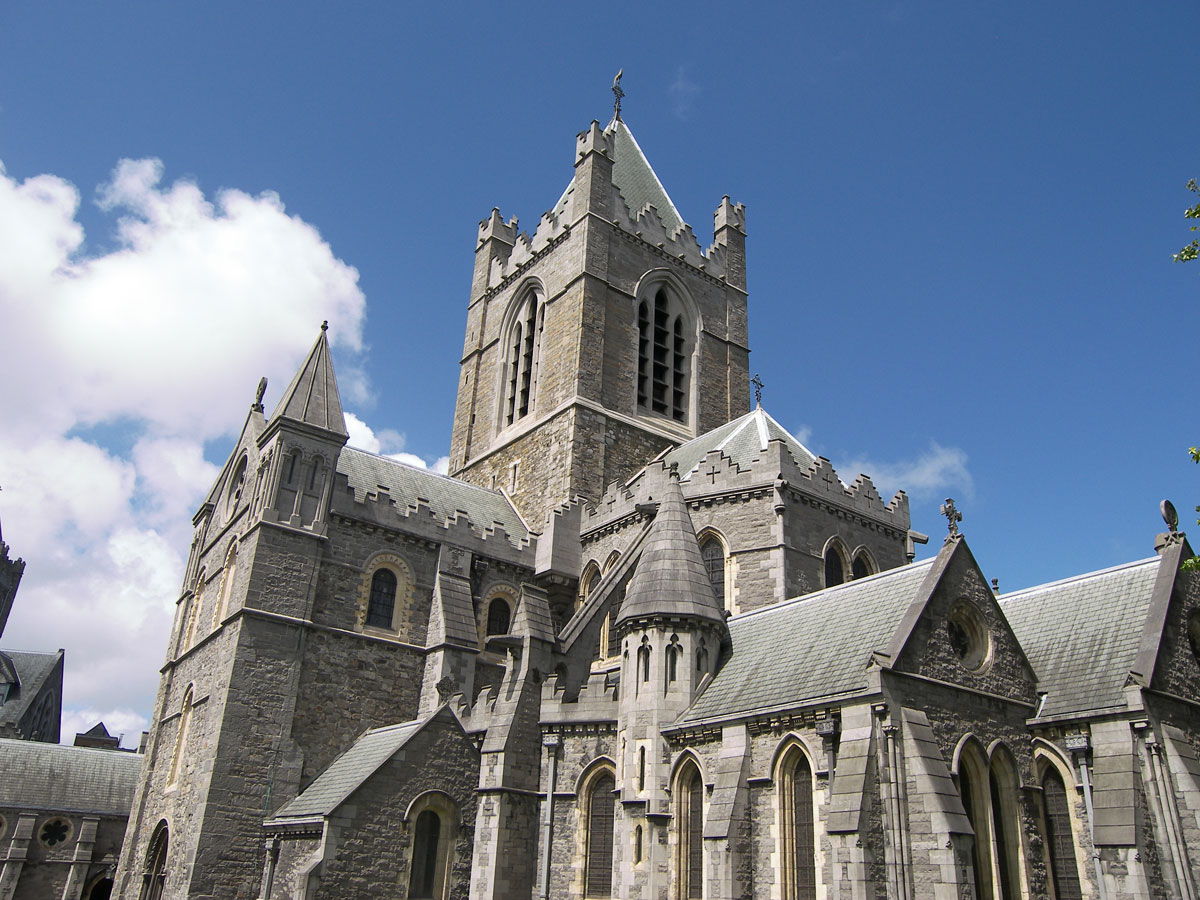
The center is a blend of the historic and the ultra-modern – mediaeval cathedrals jostle for space alongside glass skyscrapers. Explore the crypt of Christ Church Cathedral, the oldest building in Dublin that dates back to the 11th century. Wander through the quads of Trinity College and marvel at the Book of Kells, the extraordinary illuminated manuscript of the Gospels created by Celtic monks around the 8th century.
Find out even more about Dublin’s dramatic history at Dublinia, one of the city’s leading family visitor attractions where the story of Viking invasion and mediaeval warriors is vividly told. Dublinia is open all year round.
Perhaps the most defining event in Irish history was the Great Famine of 1847-1855 when more than half the population was forced to emigrate to avoid starvation. To gain an insight into that dramatic era, visit the Jeanie Johnston Family Ship Museum at Custom House Quay on the River Liffey. The ship, still used for active sailing, is a replica of the original ship that sailed from County Kerry to North America and is an evocative sight, particularly in the cramped conditions below deck.
Park Life
It’s no surprise that Dublin is filled with green spaces – in Merrion Square, a fine Georgian square, you’ll find lots of grassy spots to sit and admire the stunning architecture. There’s a statue here of Oscar Wilde and two marble columns filled with some of the acclaimed writer’s wittiest quotes.
For even wider green spaces, head for Phoenix Park. The largest enclosed urban park in Europe, the park is also home to Dublin Zoo, one of the world’s oldest. The zoo’s 28 hectares are filled with wildlife from around the world, including elephants, giraffes, lions and chimps.
Best Bar None
Temple Bar is Dublin city center’s liveliest district, filled with bars, cafes, restaurants and clubs. While it’s definitely more geared for adult entertainment, the street entertainers make the area one of the most colorful and fun during daytime, too.
Close by is the National Wax Museum packed with interactive exhibits to thrill kids of all ages with wax figures of favorites such as Harry Potter. Your offspring can even make their own video using green screen technology.
The Guinness Storehouse isn’t only aimed at adults, either – while mum and dad can enjoy a pint of Ireland’s famous black stout after the tour, the youngsters are bound to be fascinated by the explanation of how the beer is created from start to finish.
Accommodations
We stayed in a guest house called the Merchant House in Temple Bar. When we booked our stay, we actually thought it was a hotel. When we realized our error, at first we were a little disappointed. When we got there, explored our room and met our host we knew we had made the right choice. It was more like renting an apartment rather than sharing a room in someone’s house. We felt like we had a more genuine experience than had we stayed in a hotel or B&B. The Merchant House was homely, welcoming and above all we felt very safe there. Staying right in the middle of the city also meant that we could make the most of each day by getting straight out in the morning and spending all day sightseeing. I loved Paris but we did spend a lot of time on the Metro because our hotel was much further out of the city center.
Dublin Attractions Itinerary
Day 1
- Dublin Castle – grounds
- Chester Beatty Library
- Coach house – design exhibition
- Trinity College grounds
- Grafton Street
- General Post Office and O’Connell Street
- St Stephens Green
Day 2
- Chester Beatty Library (again)
- Dublin Zoo
Day 3
- Dublin Castle tour
- The Long Room and the Book of Kells at Trinity College
- Little Museum of Dublin and a Christy exhibition
- St Stephens Green
Were we sad to be leaving Dublin?
Everyone we met was very friendly and welcoming. Dublin is a beautiful city with a rich culture, heritage, and history. We would love to go back and explore more of Dublin and the surrounding areas. There were so many things to do in Dublin that we easily filled three days and would have loved to have stayed longer.
